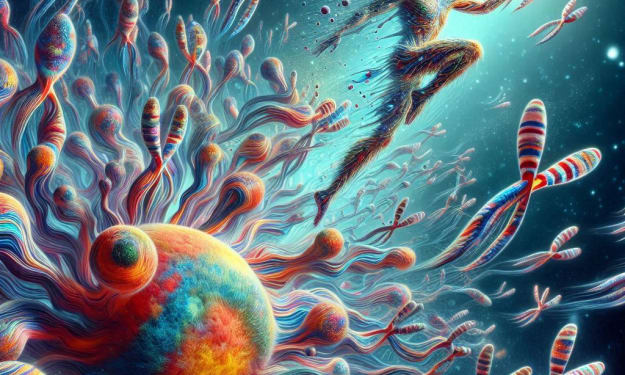The Intersection of Artificial Intelligence and IoT: What You Need to Know.
Explore the fascinating connection between Artificial Intelligence and the Internet of Things (IoT) in this insightful blog post.

Artificial Intelligence: A Brief Overview
Artificial Intelligence (AI) refers to the development of computer systems that can perform tasks that would typically require human intelligence. These tasks include speech recognition, decision-making, problem-solving, and learning.
AI can be categorized into two types: narrow AI and general AI. Narrow AI is designed to perform specific tasks, such as facial recognition or language translation, while general AI aims to replicate human intelligence and can handle a wide range of tasks.
Machine learning is a subset of AI that focuses on enabling computers to learn from data and improve their performance over time without being explicitly programmed. It involves the use of algorithms that can analyze and interpret large datasets to identify patterns and make predictions or decisions.
Deep learning is a subfield of machine learning that utilizes artificial neural networks to model and understand complex patterns and relationships. It has been particularly successful in areas such as image and speech recognition.
AI has numerous applications across various industries, including healthcare, finance, transportation, and manufacturing. It has the potential to revolutionize how we live and work by automating tasks, enhancing decision-making, and improving efficiency.
Internet of Things (IoT) Explained
The Internet of Things (IoT) refers to the network of physical devices, vehicles, appliances, and other objects that are embedded with sensors, software, and connectivity capabilities. These devices can collect and exchange data over the internet, enabling them to interact and communicate with each other.
IoT technology allows for the seamless integration of the digital and physical worlds, creating a network of interconnected devices that can be remotely monitored and controlled. It has the potential to transform various aspects of our lives, from smart homes and cities to industrial automation and healthcare.
The key components of an IoT system include the devices or things, the connectivity infrastructure, the cloud platform for data storage and processing, and the application or user interface that enables users to interact with the system.
IoT devices can range from simple sensors and actuators to complex systems such as autonomous vehicles and smart grids. These devices generate vast amounts of data that can be analyzed and used to derive valuable insights and optimize processes.
The Convergence of AI and IoT
The convergence of AI and IoT brings together two powerful technologies to create intelligent and connected systems. By combining AI's ability to analyze and interpret data with IoT's network of interconnected devices, new possibilities emerge for automation, optimization, and innovation.
AI can enhance IoT systems by providing advanced analytics and decision-making capabilities. For example, AI algorithms can analyze sensor data in real-time to detect anomalies, predict failures, and optimize the performance of devices or processes.
Conversely, IoT can provide AI systems with a wealth of data for training and learning. The vast amount of data generated by IoT devices can be used to train AI models and improve their accuracy and performance.
The convergence of AI and IoT has applications across various domains, including smart homes, smart cities, healthcare, agriculture, manufacturing, and transportation. It enables the development of intelligent systems that can automate tasks, improve efficiency, and enhance the overall user experience.
Applications of AI in IoT
AI has numerous applications in the IoT domain, enabling the development of intelligent and autonomous systems. Some of the key applications include:
- Smart homes: AI-powered voice assistants and smart devices that can automate tasks and enhance convenience and comfort.
- Industrial automation: AI algorithms that optimize production processes, predict maintenance needs, and improve safety.
- Healthcare: AI-enabled medical devices and systems that can monitor and diagnose patients, detect diseases, and assist in treatment planning.
- Transportation: AI algorithms that enable autonomous vehicles, optimize traffic flow, and enhance driver safety.
- Agriculture: AI-powered systems that monitor and analyze crop conditions, optimize irrigation and fertilization, and detect diseases or pests.
- Energy management: AI algorithms that optimize energy consumption, predict demand, and enable efficient grid management.
These are just a few examples of how AI is revolutionizing the IoT landscape and transforming various industries.
Challenges and Opportunities in the AI-IoT Intersection
While the convergence of AI and IoT presents exciting opportunities, it also brings forth unique challenges that need to be addressed. Some of the key challenges include:
- Data privacy and security: With the proliferation of IoT devices and the collection of massive amounts of data, ensuring the privacy and security of sensitive information becomes crucial.
- Interoperability: IoT devices often come from different manufacturers and use different communication protocols, making it challenging to achieve seamless interoperability.
- Scalability: As the number of IoT devices continues to grow, scaling the infrastructure to handle the increasing volume of data and devices becomes a significant challenge.
Despite these challenges, the intersection of AI and IoT offers immense opportunities for innovation and progress. Some of the key opportunities include:
- Enhanced decision-making: AI algorithms can analyze vast amounts of IoT data to derive valuable insights and support informed decision-making.
- Automation and efficiency: AI can automate tasks and optimize processes in IoT systems, improving efficiency and reducing human intervention.
- Predictive maintenance: AI algorithms can analyze sensor data to predict equipment failures and schedule maintenance proactively, reducing downtime and cost.
- Personalized experiences: AI-powered IoT systems can personalize user experiences based on individual preferences and behaviors, enhancing user satisfaction.
- Environmental sustainability: AI and IoT can be harnessed to develop smart energy management systems, optimize resource consumption, and reduce environmental impact.
By addressing the challenges and leveraging the opportunities, the AI-IoT intersection has the potential to reshape industries, improve quality of life, and drive innovation.
About the Creator
Enjoyed the story? Support the Creator.
Subscribe for free to receive all their stories in your feed. You could also pledge your support or give them a one-off tip, letting them know you appreciate their work.






Comments
There are no comments for this story
Be the first to respond and start the conversation.